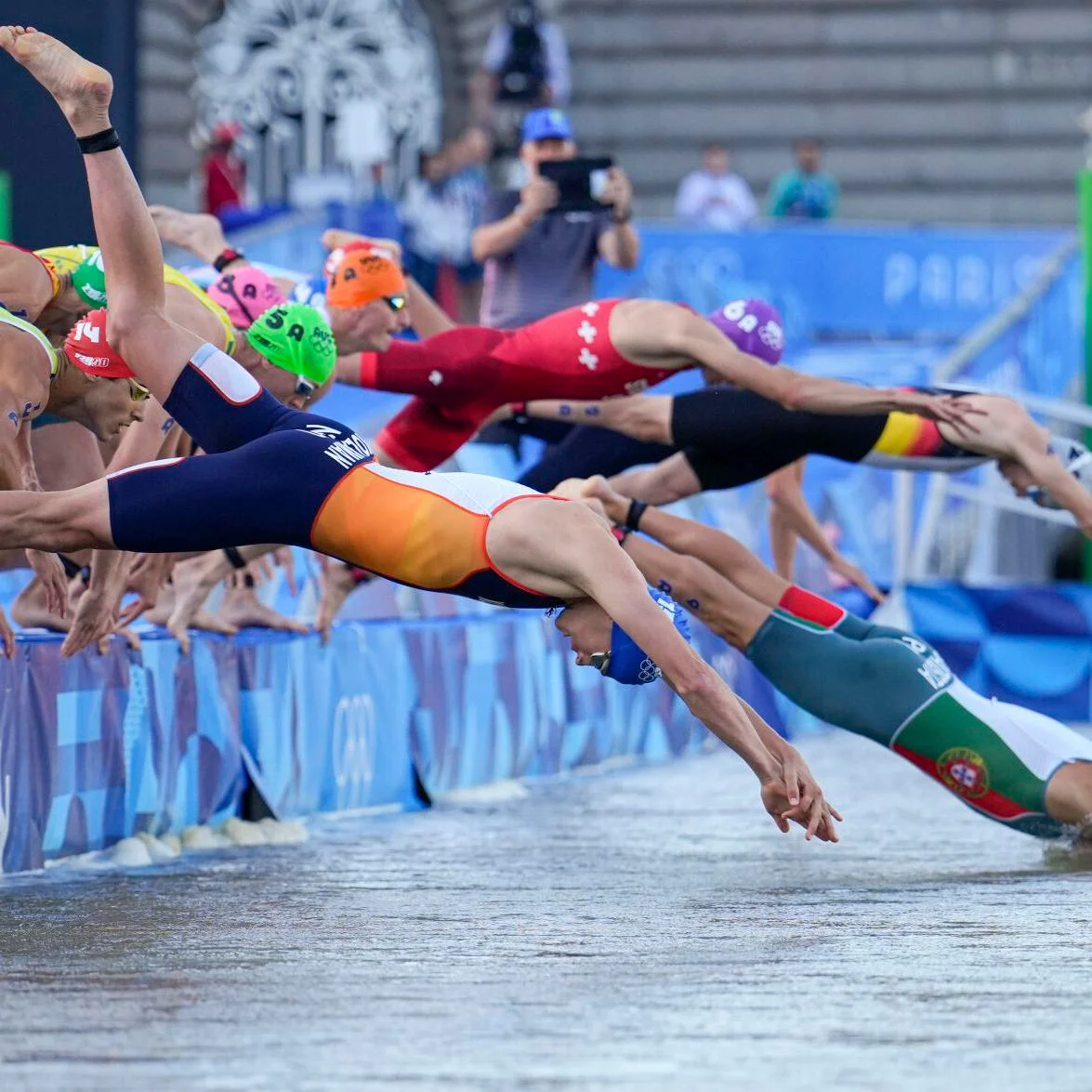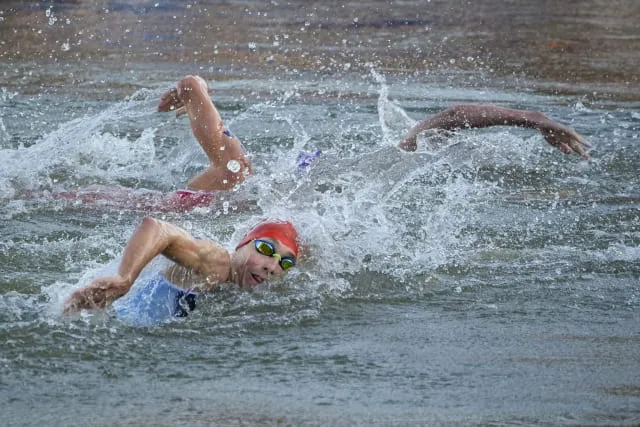
Olympic Triathletes Dive into Seine for Mixed Relay Amid Water Quality Concerns

Olympic triathletes made a splash in the Seine River on Monday, diving in for the mixed relay event after officials confirmed that the long-polluted waterway’s bacteria levels were acceptable. This decision marked a significant moment as the Seine had been mostly off-limits for swimming since 1923 due to its toxicity.
Paris had set an ambitious goal to host the swimming segments of the triathlons and marathon swimming events in the Seine. To ensure safety, representatives from World Triathlon, the International Olympic Committee, Paris Games organizers, and regional and weather authorities reviewed water quality tests on Sunday night. The results showed improvements in water quality at the triathlon site, meeting the standards set by World Triathlon by Monday morning.
In a thrilling sprint finish, Germany’s team secured the gold medal, while the United States took silver and Britain clinched bronze. This event went ahead despite Belgium’s Olympic committee withdrawing its team after one of its competitors, who swam in the Seine earlier, fell ill.
Paris Deputy Mayor Pierre Rabadan addressed the ongoing concerns about water quality, emphasizing that the decision to swim was based on strict European regulations and daily water quality testing. “It’s not about deciding to swim or not. There are rules,” Rabadan stated, reassuring the public that the water quality was monitored and deemed safe.
To clean up the Seine, Paris invested 1.4 billion euros ($1.5 billion) in infrastructure improvements. This included building a giant basin to capture excess rainwater and prevent wastewater from entering the river, renovating sewer systems, and upgrading wastewater treatment plants. Despite occasional heavy rains during the Games, which elevated levels of fecal bacteria like E. coli, the conditions were generally favorable, allowing the races to proceed.
Organizers remained confident that warm temperatures and sunlight would reduce germ levels before each event involving swimming in the Seine. Athletes had already swum in the river for the men’s and women’s individual triathlons, though the men’s race had been postponed by a day due to water quality issues.

American triathlete Taylor Spivey highlighted the stress of dealing with water quality uncertainties. She acknowledged the picturesque backdrop of Paris monuments like the Eiffel Tower and the Champs-Elysees but pointed out the constant concern over water quality. Her teammate, Morgan Pearson, echoed this sentiment, expressing frustration over the last-minute changes and the ongoing discussions about the Seine’s water quality.
Brazilian triathlete Arnold Djenyfer found the water conditions acceptable on Monday, noting no significant difference from previous races. However, Belgium’s team withdrew from the relay after Claire Michel fell ill and sought treatment. Paris officials cautioned against jumping to conclusions, noting that other athletes who had not swum in the Seine also fell ill.
Norwegian competitor Vetle Bergsvik Thorn experienced a stomach illness but attributed it to possible food poisoning rather than the river. Swiss officials also reported that triathlete Adrien Briffod, who had competed in the Seine, withdrew due to a stomach infection, and his replacement, Simon Westermann, also pulled out with a gastrointestinal infection.
Despite these challenges, Switzerland’s Julie Derron, who won silver in the women’s triathlon, reflected positively on the experience. She acknowledged the difficult conditions but cherished the memories and the incredible atmosphere of competing in such a historic venue.
Daily water quality tests measured levels of fecal bacteria, including E. coli. World Triathlon’s guidelines and a 2006 European Union directive provided a framework for assessing these levels. According to World Triathlon, E. coli levels up to 1,000 colony-forming units per 100 milliliters are considered “good” and safe for competition.
The triathlon mixed relay featured four-person teams with two men and two women. Each athlete swam 300 meters, cycled 6.8 kilometers, and ran 2 kilometers, showcasing their endurance and versatility in a highly competitive event.
Despite the water quality concerns and the challenges faced, the Olympic triathletes demonstrated resilience and determination, making the mixed relay event a memorable highlight of the Paris Games.



